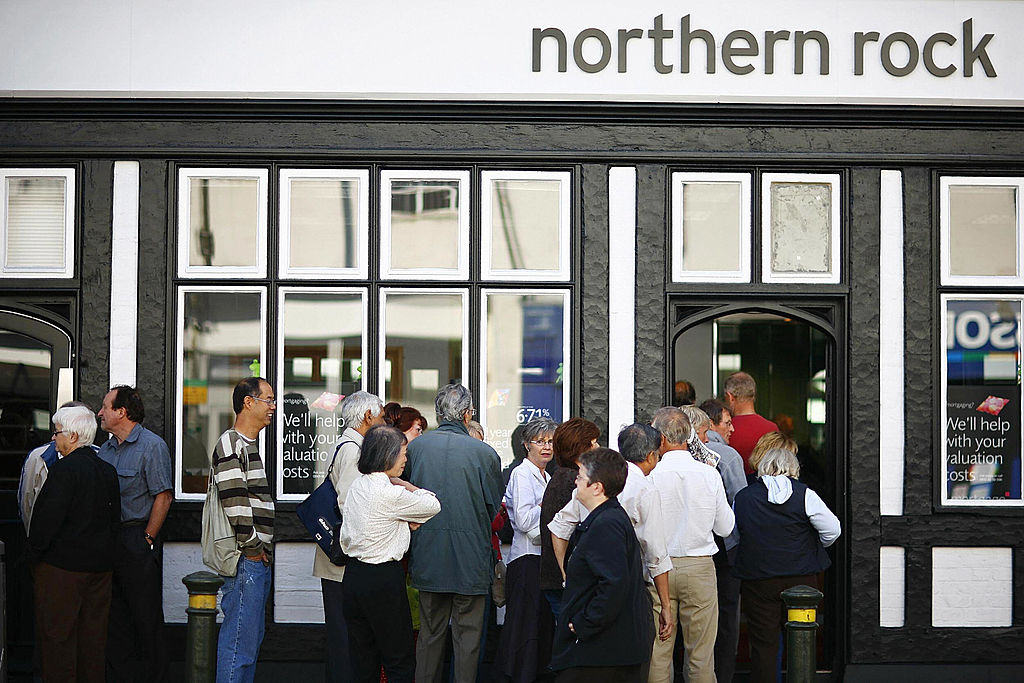Will FTSE 100 retailers Tesco and Sainsbury’s deliver further share price gains?
After their recent strong performances, FTSE 100 retailers Tesco and Sainsbury's face a difficult future, but they are taking action to drive growth, says Robert Stephens


The share prices of FTSE 100 retailers Tesco and Sainsbury’s have surged higher over recent months.
Indeed, they have gained 13% and 16%, respectively, since the start of the year. This is significantly higher than the wider index’s return of 5% over the same period.
Of course, with a cost-of-living crisis in full swing amid rapidly rising interest rates, their near-term outlook remains relatively uncertain.
MoneyWeek
Subscribe to MoneyWeek today and get your first six magazine issues absolutely FREE

Sign up to Money Morning
Don't miss the latest investment and personal finances news, market analysis, plus money-saving tips with our free twice-daily newsletter
Don't miss the latest investment and personal finances news, market analysis, plus money-saving tips with our free twice-daily newsletter
However, their low valuations and sound strategies suggest they offer attractive long-term investment prospects.
The potential impact of a cost-of-living crisis on FTSE 100 retailers
With annual inflation currently standing at over 10% and average earnings in the UK rising by around 6% per year, consumers’ disposable incomes are coming under sustained pressure.
In tandem, rapid interest rate rises that are being implemented by the Bank of England in an attempt to reduce inflation are contributing to a worsening near-term economic outlook. Indeed, the UK economy only narrowly avoided a recession in the second half of last year.
As a result, consumer confidence has reached record lows over recent months. This is likely to negatively impact the prospects for FTSE 100 retailers such as Sainsbury’s and Tesco as consumers become increasingly price-conscious.
While previously they may have valued quality and service alongside competitive prices when purchasing groceries, clothing and other items, they may now focus to a greater extent, or even solely, on price when deciding where to shop and what to buy.
This could lead to reduced sales and, in particular, squeezed margins across the retail sector as consumers become more willing to trade down to cheaper substitutes, postpone spending on certain items, or even avoid specific products that they now deem to be unnecessary.
From an investment perspective, falling sales or reduced profitability is unlikely to be conducive to a rising share price for either Tesco or Sainsbury’s.
Why Tesco’s share price offers good value for money
Despite Tesco’s recent share price rise, the FTSE 100 retailer continues to trade on a low valuation.
It has a price-to-earnings ratio (p/e) of just 11.8 and a price-to-sales ratio (p/s) of only 0.3. This suggests that investors have fully priced in a tough near-term outlook for the firm as it contends with weak consumer confidence amid a cost-of-living crisis.
Moreover, the company is in a strong position relative to other retailers to overcome, and even capitalise on, current downbeat sector trends.
Notably, it has relatively high levels of customer loyalty which could mean it is less affected than sector peers by an increasingly price-conscious consumer. Over 20 million households in the UK have a Tesco Clubcard which may mean they are relatively sticky, and less likely to shop at a cheaper rival such as Aldi or Lidl.
In addition, Tesco is on track to deliver £500m in cost savings in the current financial year. By the end of next year, it expects to generate around £1bn in cumulative savings as part of a major efficiency programme. This will help it to maintain current margins at a time when high inflation is causing many FTSE 100 retailers to report rising costs and squeezed profitability.
The company’s dominant online position does not appear to be fully reflected in its current share price. It has a 36% share of the online grocery market which is likely to catalyse its financial and investment performance as a rising proportion of UK consumers pivot to online channels when purchasing their groceries and other products.
Why Sainsbury’s share price can deliver FTSE 100-beating performance
While the near-term outlook for Sainsbury’s share price is likely to remain precarious given the challenges facing consumers, it nevertheless has the potential to outperform the FTSE 100 over the long run.
Crucially, it continues to offer a wide margin of safety even after its recent share price rise. The retailer currently trades on a p/s ratio of just 0.2 and has a p/e ratio of around 10.2. Both figures indicate that its shares remain undervalued even though the company faces an uncertain near-term outlook due to weak consumer sentiment.
Sainsbury’s is still in the midst of a major reorganisation as it seeks to successfully integrate different parts of its business, such as Argos and Habitat, into its supply chain.
It now expects to generate over £1.3bn in cost savings in the three years to 2024, with around £730m of savings having already been delivered. Reducing operating costs at the same time as many other FTSE 100 retailers are experiencing rising costs due to high inflation could provide Sainsbury’s with a clear competitive advantage.
Indeed, it is allowing the firm to reinvest £500m in pricing over a two-year period that should allow it to expand market share, as it did in the most recent quarter, while rivals without such financial flexibility struggle to keep prices low.
A growing market share could allow Sainsbury’s to capitalise to a greater extent on an eventual UK economic and consumer recovery, thereby catalysing its long-term share price performance.
Are these FTSE 100 retailers worth buying?
The scale of recent share price gains posted by Sainsbury’s and Tesco are unlikely to be repeated over the short run.
While both companies are well placed to overcome the cost-of-living crisis and weak economic outlook, investor sentiment is likely to remain downbeat regarding the sector's prospects over the coming months.
However, their ambitious cost savings programmes could provide clear competitive advantages and market share gains that translate into higher sales and profitability. Meanwhile, both stocks trade on low valuations that provide scope for significant upside over the coming years.
Therefore, while both stocks are likely to experience elevated levels of volatility in the short run as the cost-of-living crisis and an uncertain economic outlook play out, now appears to be an opportune moment to purchase them while they offer excellent value for money.
Get the latest financial news, insights and expert analysis from our award-winning MoneyWeek team, to help you understand what really matters when it comes to your finances.
Robert Stephens is a CFA charterholder with over 15 years industry experience. He has worked with a wide range of global asset managers and contributed to a variety of newspapers and magazines including The Telegraph, What Investment and Citywire. He has been a passionate investor on his own account for over 20 years and cites Warren Buffett, Ben Graham and Peter Lynch as his main influences.
-
 Pundits had a bad 2025 – here's what it means for investors
Pundits had a bad 2025 – here's what it means for investorsThe pundits came in for many shocks in 2025, says Max King. Here is what they should learn from them
-
 The MoneyWeek ETF portfolio – early 2026 update
The MoneyWeek ETF portfolio – early 2026 updateThe MoneyWeek ETF portfolio had a solid year in 2025 and looks well placed for what the next 12 months may bring
-
 Why Scotland's proposed government bonds are a terrible investment
Why Scotland's proposed government bonds are a terrible investmentOpinion Politicians in Scotland pushing for “kilts” think it will strengthen the case for independence and boost financial credibility. It's more likely to backfire
-
 How have central banks evolved in the last century – and are they still fit for purpose?
How have central banks evolved in the last century – and are they still fit for purpose?The rise to power and dominance of the central banks has been a key theme in MoneyWeek in its 25 years. Has their rule been benign?
-
 Buying vs renting: is is better to own or rent your home?
Buying vs renting: is is better to own or rent your home?The higher mortgage rates of recent years have actually made renting comparatively cheaper, analysis suggests. But there are hidden costs to long term renting.
-
 Is Britain heading for a big debt crisis?
Is Britain heading for a big debt crisis?Opinion Things are not yet as bad as some reports have claimed. But they sure aren’t rosy either, says Julian Jessop
-
 Why investors can no longer trust traditional statistical indicators
Why investors can no longer trust traditional statistical indicatorsOpinion The statistical indicators and data investors have relied on for decades are no longer fit for purpose. It's time to move on, says Helen Thomas
-
 Bank of England resolves payments issue that threatened home sales
Bank of England resolves payments issue that threatened home salesNews Homebuyers and sellers faced an anxious wait for funds to clear on property transactions today due to issues hitting the Bank's CHAPS service.
-
 How will markets react to the next Bank of England rate decision?
How will markets react to the next Bank of England rate decision?The Bank of England is due to announce its latest interest rate decision on Thursday, 2nd November, but how will markets react?
-
 Halifax: House price slump continues as prices slide for the sixth consecutive month
Halifax: House price slump continues as prices slide for the sixth consecutive monthUK house prices fell again in September as buyers returned, but the slowdown was not as fast as anticipated, latest Halifax data shows. Where are house prices falling the most?
